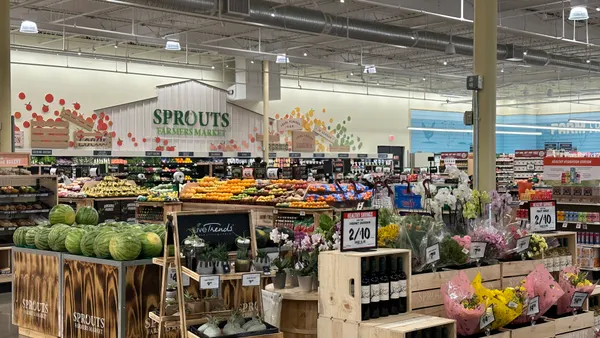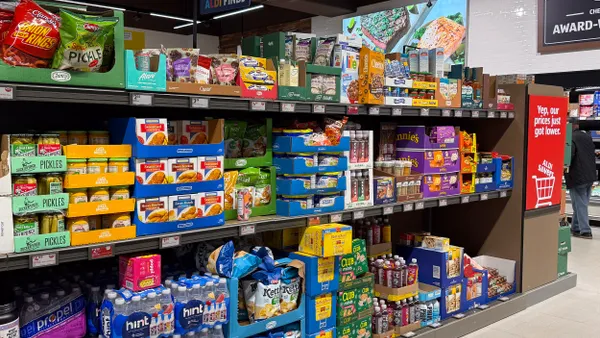Dive Brief:
- Following the end of its partnership with Whole Foods in May, Instacart’s sales showed an uptick between July and September, according to new research from tech company Edison Trends.
- Publix is Instacart’s top-selling grocer, providing 37% of its sales. The grocer also had 69% more Instacart orders than the next closest competitor, Costco, which makes up 24% of Instacart's sales. The other top grocers are Kroger (16%), Wegmans (12%) and H-E-B (12%).
- Costco's online sales via Instacart grew 99% since last year, according to the report, while Kroger's grew 86%.
Dive Insight:
When Instacart announced it would no longer do business with Whole Foods last December, there was speculation that the loss would impede Instacart’s growth. Based on Edison's findings, that has not been the case. In March this year, Whole Foods only made up 6% of Instacart orders, and comprised an average of 13% of sales in the 20 months prior.
Instacart has focused on new ways to drive sales outside of its relationship with Whole Foods in recent months, such as boosting its Enterprise business, offering alcohol delivery and introducing store pickup in 30 states. Store pickup orders are, on average, 20% larger than delivery orders, Nilam Ganenthiran, Instacart's chief business officer, previously told Grocery Dive.
Although these efforts are driving sales, the more significant growth comes from major retailers. The increase in Costco’s sales through Instacart, up 6% from last September, can be attributed to the club store's decision to expand its Instacart partnership to all stores last year. Kroger launched a similar expansion last August, bringing Instacart delivery to 1,600 stores.
With more than 300 retailers using its e-commerce platform and gig workers fulfilling orders in over 20,000 stores, Instacart has now penetrated more than 80% of U.S. households, the company has said. However, the grocery delivery space is still evolving and Instacart faces competition from the likes of Peapod, Amazon and Walmart.
Amazon remains a top player in the space, with Coresight Research finding 62.5% of online grocery shoppers purchasing from the e-tailer in the last year. Walmart’s share of online grocery is also on the rise, with Target looming close behind. Overall, more consumers are adopting online grocery, with total users climbing from 23% in 2018 to 37% this year, translating to roughly 35 million new shoppers.










